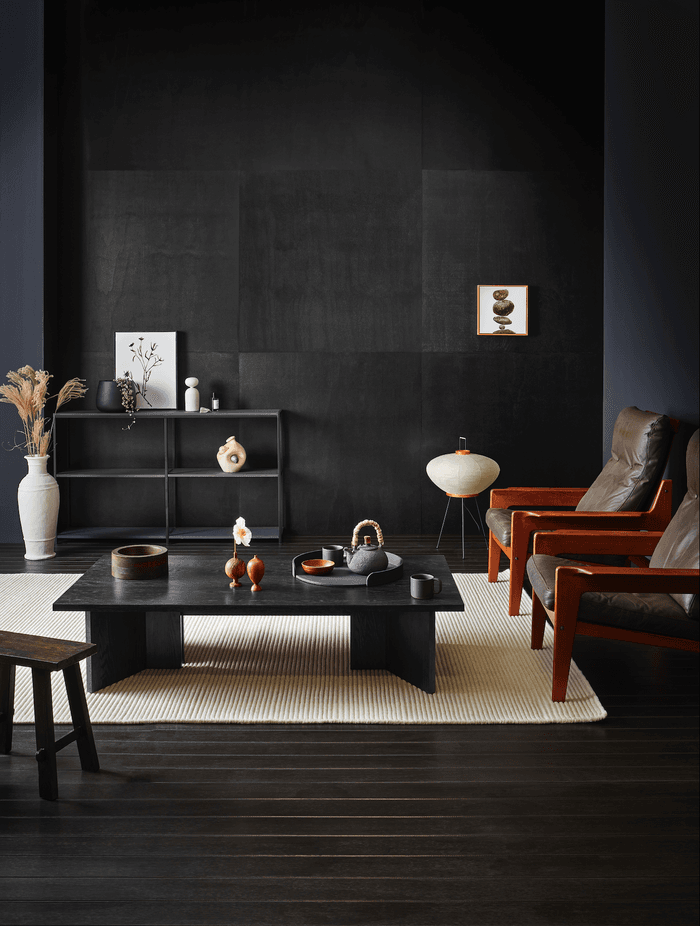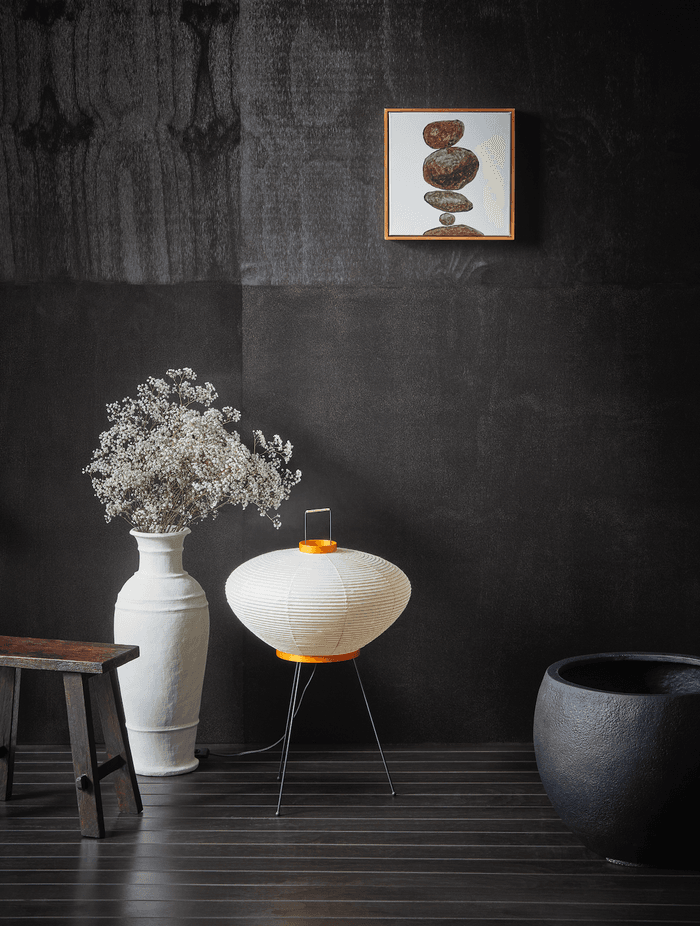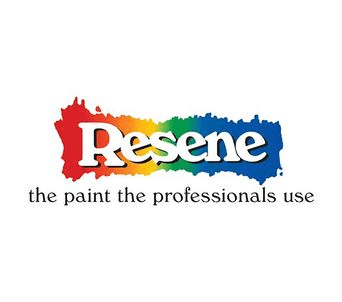Back to Black
Black-coloured timber is among the most desirable choices for exterior cladding – particularly on buildings with contemporary architectural forms. But recently, the popularity of black-coloured timber for interior wall cladding, ceiling cladding, flooring and furniture has also been skyrocketing.
Architects and interior designers who favour a modern, minimalist aesthetic are drawn to black-coloured timber for a number of reasons. Black timber walls and flooring exude understated elegance and sophistication while providing a clean, recessive backdrop which allows lighter elements to pop in striking contrast. The versatility of black timber is another factor. The classic neutrality of black complements a wide range of design styles, making it a flexible choice for designers and their clients and allowing for greater creativity in furniture and décor selection. And given that timber is a natural material, it has enduring and timeless appeal that can last a lifetime if properly cared for.
There are a number of different Resene products that can take interior timber from its raw, inherent hue to a dramatic black depending on your project goals and the finish you’re after. Resene Enamacryl gloss waterborne enamel is a durable, low-maintenance option for getting a glossy opaque black finish on timber surfaces like furniture, joinery, doors and more. Timber stains such as Resene Colorwood Charred Black and Resene Colorwood Pitch Black are semi-transparent stain options for imparting black pigmentation to timber while also letting the natural grain of interior wood surfaces remain on display, adding character and texture without overpowering pared-back designs that hinge on simplicity. Depending on whether you want a gloss, semi-gloss or satin finish, different clear topcoats such as Resene Aquaclear and Resene Qristal ClearFloor 1K can then be applied to adjust the sheen and add protection.
But now, there’s a new option on the table for those looking to ‘blacken’ timber that’s already been stained or varnished which combines one of Resene’s most recent innovations with favourite clear finishes to offer clever solutions to this tricky design conundrum: Resene Colour Enhance Japan Black.

Despite the inky depth of Resene Colour Enhance Japan Black, the grain of your timber remains visible so that you don’t lose the appeal of its natural beauty and inherent texture. The more coats you add, the blacker the effect.
Where the name comes from
Most commonly associated with striking Japanese crafts, black lacquer has been applied to a wide variety of useful and decorative objects, from furniture to artwork to religious iconography for many millennia. Ornaments that date back as far as 7000 BCE – with their lacquer almost completely intact – were uncovered in burial sites in Hokkaido, though evidence suggests that this eye-catching coating is far older. Traditional lacquer is made from the sap of the Toxicodendron vernicifluum tree, which has existed in Japan for more than 12,600 years, and since Japanese artisans most likely learnt the craft from the Chinese, the history of lacquerware probably stretches back much further. Although black lacquer was applied to a variety of substrates, including pottery and earthenware, wooden objects and décor are perhaps the most iconic.
Europeans were so enamoured by the exquisite beauty of Japanese lacquerware that they developed a process in the 17th century called ‘Japanning’ to emulate it. Since the lacquer tree was not a species that was native to Europe, a mixture of varnishes and resins were applied in heat-dried layers then polished to a glossy finish to impart an enamel-like effect. This imitation technique was first used on wood furniture. Later, it was used over ironware to give an attractive protective coating to sewing machines, tools and building hardware. Later still, in the United States, another method for imitating the attractive look of lacquer was developed for painting bicycles and automobiles. While the American formulation was popular for being cheap to produce, quick to dry and durable, its toxic concoction of bitumen, heavy metals, solvents and varnishes leaves much to be desired for today’s environmental and VOC conscious consumers.

Black stained timber’s durability and timelessness appeal to architects, designers, builders and clients who prioritise both aesthetics and practicality.
Dark wood stains can help mask imperfections and signs of wear, ensuring that the material maintains its sleek, contemporary appearance. Now, with Resene Colour Enhance Japan Black, you can get this look on interior timber walls, ceilings, furniture, flooring, trims and décor that has already been stained or varnished to darken its look. Plywood wall panels finished in two coats of Resene Aquaclear satin mixed with Resene Colour Enhance Japan Black, timber floor in three coats of Resene Qristal ClearFloor 1K mixed with Resene Colour Enhance Japan Black, concrete pot (right) finished in two coats of Resene Concrete Clear satin mixed with Resene Colour Enhance Japan Black and standing pot in Resene Merino. Artwork on right created with Resene Colour Enhance Japan Black, Resene Colour Enhance Red Brown and pencil, frame in Resene Colour Enhance Red Brown and stool finished in Resene Colour Enhance Walnut, all mixed with Resene Aquaclear satin. Lamp from Public Record.
In addition to Resene Japan Black, Resene Colour Enhance comes in a range of other hues that can be used to transform the look of timber surfaces both new and old.
To increase the intensity of the effect, a second or third coat can be applied. Background finished in three coats of Resene Qristal ClearFloor 1K mixed with Resene Colour Enhance Japan Black, tray (top) in one coat of Resene Aquaclear satin mixed with Resene Colour Enhance Japan Black, large spoon (on tray) in two coats of Resene Aquaclear satin mixed with Resene Colour Enhance Japan Black, small spoon (on tray) in three coats of Resene Aquaclear satin mixed with Resene Colour Enhance Japan Black, spoon (bottom left) in one coat of Resene Aquaclear satin mixed with Resene Colour Enhance Red Brown, bowl and spoon (bottom right) in two coats of Resene Aquaclear satin mixed with Resene Colour Enhance Red Brown and bowl (bottom centre) in two coats of Resene Aquaclear satin mixed with Resene Colour Enhance Walnut. Wooden vase from Public Record.
What sets Resene Colour Enhance Japan Black apart
Inspired by the enduring captivation that Japanese lacquer continues to hold, Resene sought out a solution that combines the enticing jetness and glossiness that’s synonymous with lacquerware in a way that would be kinder on the planet. For the deepest pigmentation possible, the Resene Technical Team looked to its recently released colour, Resene Blackest Black – the jettest hue in Resene’s colour range. These same pigments were combined with its Resene Colour Enhance technology to allow the greatest flexibility for designers and their clients to manipulate the depth of both old and new timber surfaces.
Resene Colour Enhance is an innovative solution for refurbishing old timber doors, joinery, furniture and décor. What makes the product unique is that it can be combined with clear finishes and applied over surfaces which are already varnished so that you don’t have to sand or strip the woodwork back to bare timber. Resene Colour Enhance is available in a range of colours – in addition to Resene Japan Black – which can be mixed with a number of popular Resene clear products to apply colour to your timber’s surface while still allowing the natural texture of the wood grain to show through. The effect is further enhanced when a second or third layer is added, which can be a great way to mask the timber’s existing colour and impart an entirely new look.
Once you consider the added variables of stain colour and finish options, the possibilities for putting Resene Colour Enhance Japan Black to use on your projects is incredibly broad and offers more control than ever before for customising the look and depth of your timber surfaces. If you were starting with bare sanded timber wall cladding, you could first apply multiple coats of a Resene Colorwood stain of your choice. If you were going for a truly deep black with a glossy finish, you might opt to apply multiple coats of Resene Colorwood Pitch Black followed by three coats of Resene Aquaclear gloss that has Resene Colour Enhance Japan Black mixed in to enhance its jetness. Or you could apply a different coloured stain, such as Resene Colorwood Dark Oak, and apply one or more coats of Resene Aquaclear satin mixed with Resene Colour Enhance Japan Black – which adds depth and complexity to the initial wood stain colour and protects the surface with a flatter, satin finish. Or you could simply apply Resene Aquaclear mixed with Resene Colour Enhance Japan Black to your wood. Depending on the desired look, you could apply a single coat of your Resene Colour Enhance Japan Black mixture followed by untinted clear finishes or use multiple tinted coats to get a blacker look.
Not only can Resene Colour Enhance Japan Black be added into Eco Choice-approved Resene Aquaclear for timber walls, ceilings, furniture and trims and Resene Qristal ClearFloor 1K for flooring, it can also be added to Resene Concrete Clear or Resene Concrete Wax to change the look of new or old interior concrete surfaces. For a uniform look, take care to avoid lapping during application – or lean into the lapping if you want to create a mottled effect.
As always, we recommend testing out your proposed combinations of stain, clear and Resene Colour Enhance on a spare piece of timber or an inconspicuous area of concrete before finalising your specification to ensure you and your client are happy with the final look. The more coats of Resene Colour Enhance Japan Black you add, the blacker the effect will be.
› To see the Resene Colorwood and Resene Colour Enhance range, visit www.resene.com/colorwood. For more on Resene Blackest Black, visit www.resene.com/blackestblack.
